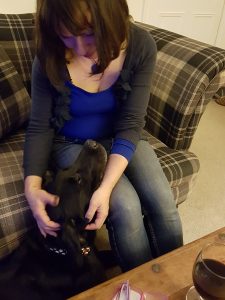
Photo credit Bob Langrish
I was so sad to hear of the death of Dame Jilly Cooper. It’s a slight exaggeration to say that one of her books saved my life, but it certainly felt like that at the time. No, it wasn’t one of the ‘bonkbusters’, although I still think Riders was one of the most affecting novels I’ve ever read. Yes, there was a fair bit of sex, but it was well-written sex, not remotely cringey. And as Jilly pointed out at the time, her characters didn’t really “do it” any more often or more enthusiastically than the rest of us.
THE NOVELS
I’ll come to the ‘almost life-saving’ book shortly, but more about the novels first. I only read the first three books in the Rutshire series, but I have the fondest memories of those stories and characters. I also read all six of her short romances: Emily, Bella, Harriet, Octavia, Prudence, and Imogen. Perfect for when you’ve got a streaming cold, curled up on the sofa with a crackling fire in the grate, a dog at your feet and a tot of brandy in your hot chocolate.
The novels are full of humour – Jilly really was the queen of the double entendre – but there were also many insightful observations of what it means to be human. She wrote about romantic relationships, but also friendship, ambition, power, innocence, bitterness and revenge. We saw cruelty, but also kindness; we saw grief, loss, the pain of infertility. She wrote lyrically about the beauty and drama of nature, and touchingly about animals, the bonds we develop with them, and how they have served us over time. (see her 1983 book, Animals in War.)
CLASS
Class and the effects of class difference often came up in her fiction, and her 1979 book, Class, while satirically humorous, contained serious insights and observations. Jilly herself was, of course, undeniably ‘posh’. I had the pleasure of interviewing her in 1999 as part of an intensive course I was doing in Periodical Journalism. We had to write a profile piece, aimed at a Sunday supplement. I approached a few celebrities, most of whom turned me down or didn’t bother to reply. Jilly, deeply apologetic that she didn’t have time to see me in person, kindly offered a telephone interview instead. She was generous, candid, thoroughly entertaining and yes, SO posh. She had a voice that made you think of midnight feasts in the girls’ dorm, jolly hockey sticks and gymkhanas. She even used the F-word in what I really want to describe as a frightfully posh accent.
MINING REAL LIFE
What a joyous half hour that was. She was a delight. She shared hilarious anecdotes, and we talked a lot about dogs. Two of hers had gone missing for a while during that morning’s walk ‘naughty, naughty dogs!’ and that experience, she told me, would probably end up in one of her novels, into which she puts, she said, ‘almost everything that happens’.
Which is perhaps one of the reasons her work is so perennially popular. True, we can’t all relate to cocktail parties, hunt balls, and bed-hopping weekends in the country pile, but there’s so much in her novels that many of us can relate to, whether or not we’ve been through the same things. The heartbreak of infertility is explored in more than one of her novels, and in Harriet, there is a powerful and moving storyline about being at the bedside of a child who almost dies from meningitis, something Jilly experienced with her beloved adopted son.
THE COMMON YEARS
Let me come at last to the ‘almost life-saving’ book, The Common Years. It’s a kind of memoir – diary covering the 10 years Jilly lived on the edge of Putney Common. it starts with her and Leo making the ‘momentous decision to get a dog’. This later became two, then three dogs. By her own admission, she was ‘a terrible dog owner’, with the dogs forever escaping onto the common and wreaking havoc.
The book consists of diary entries filled with the most wonderful anecdotes about the people and dogs she met on the common, as well as exquistely precise observations of nature, the weather, and the changing seasons. Running through the whole book are Jilly’s personal insights and reflections, her hopes, dreams and fears. I remember giggling when she wrote something along the lines of: Decide that if Maidstone (one of her dogs) does twenty wees, my new book on class will be a success. Walk round the common three times to achieve twenty wees.
Whether it’s the humour, the dogs, or the personal reflection, I don’t know, but there’s something incredibly comforting about this book. Reading just a few pages can feel as uplifting as spending quality time with your closest friend.
A LIGHT IN THE DARKNESS
I discovered this book at a time when I was at my lowest ebb, stuck in a controlling and abusive marriage. I was rarely ‘allowed’ to spend time with friends or family, and the isolation was crushing. The only thing that kept me going was my children – and books. I’d loved everything I’d read by Jilly so far, so when I spotted a second-hand copy of The Common Years, I grabbed it. Initially, I wass disappointed to find that it wasn’t a novel. But what a discovery it turned out to be! I must have read that book three times in six months. I was so grateful to Jilly for providing some moments of lightness in an otherwise gloomy existence that I wrote to thank her. I a;so asked if some of the characters in the book were made up – I’d assumed they were – and I was thrilled to receive a very personal and entertaining reply. which I still treasure. Although I own the physical letter, I don’t own the copyright, and so I’ve been waiting to hear back from JIlly’s agent regarding permission to reproduce it here. And I’m pleased to say, yay – permission granted! So here’s the letter:

A ‘GO-TO BOOK IN A CRISIS’
Eventually, I was able to escape that awful marriage and make a fresh start with my children (and dogs) but I’ve never forgotten how important that book was in giving me hope during those dark days. I recommend it often, as does a close friend who, having just recommended it again, commented this morning, ‘it’s my go-to book in a crisis.’ (Thanks Iona!) But whether you’re having a tough time or not, I highly recommend this book. I promise you, you’ll feel just a little lighter every time you dip into it.
thank you, dame jilly
You lightened our lives, made us laugh, made us cry, made us think. You inspired me, and many other writers. I hope this finds you sitting on a cloud, sipping a champagne cocktail, surrounded by faithful dogs and handsome men. Or maybe handsome dogs and faithful men? Both, Jilly. You deserve both!
If you’d like to know more about me and my books, please visit my Website











 The moment I set eyes on Henry, I knew I loved him. It’s true he was a big lad. He was half Lab, half Springer, but people often asked if there was ‘some Great Dane in there somewhere’, and maybe there was – his paws were huge! What I saw was an overgrown puppy with the shiniest coat I’d ever seen and the silkiest ears I’d ever stroked.
The moment I set eyes on Henry, I knew I loved him. It’s true he was a big lad. He was half Lab, half Springer, but people often asked if there was ‘some Great Dane in there somewhere’, and maybe there was – his paws were huge! What I saw was an overgrown puppy with the shiniest coat I’d ever seen and the silkiest ears I’d ever stroked.




 I miss the comforting weight of his head on my knee and his great big dry paw in my hand; I miss lying on the floor with him and cuddling his warm, solid body; I miss the strange basmati-rice smell of him first thing in the morning; I miss the funny noises he’d make when he was excited, the exaggerated sighs when he thought it was time I took him out, the sound of him snoring. I even miss the sound of him eating. I vacuumed the house yesterday, and it occurred to me that it would probably stay looking clean and newly-vacuumed for quite a while. But right now I’d give anything to have the place covered in dog hair and muddy pawprints.
I miss the comforting weight of his head on my knee and his great big dry paw in my hand; I miss lying on the floor with him and cuddling his warm, solid body; I miss the strange basmati-rice smell of him first thing in the morning; I miss the funny noises he’d make when he was excited, the exaggerated sighs when he thought it was time I took him out, the sound of him snoring. I even miss the sound of him eating. I vacuumed the house yesterday, and it occurred to me that it would probably stay looking clean and newly-vacuumed for quite a while. But right now I’d give anything to have the place covered in dog hair and muddy pawprints.



 I spent a good part of the week either just watching the sun go down, or staring at the sea. Apart from that, it was just eating nice food, drinking nice wine (or prosecco) and reading. Every now and again, I kept getting a little twitch of guilt – I should be writing! But then I reminded myself that I’m in the midst of attempting to fill the creative well again. if you follow this blog, you’ll know that I’ve just come through a rather horrible period of writers’ block, so in a way, I’ve had an enforced break, but it’s really made me think about my own creativity and how it works. As writers of fiction, we should be observing the world around us and the people in it, but it’s also important to relax sometimes, and observe in perhaps a more passive way, so that we’re watching the setting of the sun and the changing of the tides without necessarily thinking about the words we’d use to describe these things.
I spent a good part of the week either just watching the sun go down, or staring at the sea. Apart from that, it was just eating nice food, drinking nice wine (or prosecco) and reading. Every now and again, I kept getting a little twitch of guilt – I should be writing! But then I reminded myself that I’m in the midst of attempting to fill the creative well again. if you follow this blog, you’ll know that I’ve just come through a rather horrible period of writers’ block, so in a way, I’ve had an enforced break, but it’s really made me think about my own creativity and how it works. As writers of fiction, we should be observing the world around us and the people in it, but it’s also important to relax sometimes, and observe in perhaps a more passive way, so that we’re watching the setting of the sun and the changing of the tides without necessarily thinking about the words we’d use to describe these things.






